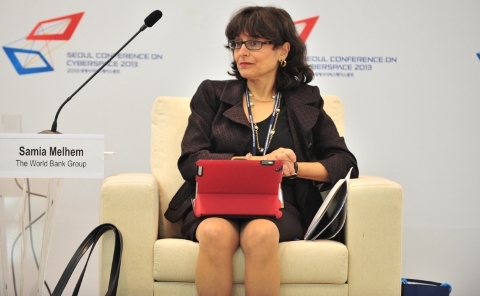By Dr. Sam Pitroda

Education is empowering and redefining. For hundreds of millions of the young in India, education is also about discipline, development, curiosity, creativity and a path to breaking the cycle of ignorance and poverty leading to employment and prosperity. I know this because as a poor kid from a tribal village in Odisha, I was lucky enough to get a Masters in Physics in 1964 in India for just over $10 in fees. Where else in the world can you do that? Having studied Physics in India and Electrical Engineering in the US, I acquired a new caste — an engineer — and helped lift my entire family of five sisters and three brothers to college education, enlightenment and lifelong prosperity. This is the dream of many young students in India.
As the government announced the New Education Policy 2020, I was heartened to see education at the forefront of the national agenda. Today, the growing aspirations of children and parents in India are reflected in an increasing demand for education, which has far exceeded the supply. We at the National Knowledge Commission (NKC) (2004-2009) brought the idea of educational transformation for 21st-century needs into the mainstream thinking of the government, with an emphasis on expansion, excellence, and equity. The recommendations of the Commission impacted the education sector through far-reaching initiatives of the UPA government on multiple fronts leading to almost 900 universities, many new IITs and IIMs, increased funding for education in the 11th Five-Year Plan and the Right to Education Bill. NEP 2020 as a statement of intent has much in it that is positive. The challenge, as always, is in the details and in delivering on promises.
For instance, allocating 6 per cent of GDP on education spending is needed and welcome. But how and when? In 2020-2021, the government spent only 3.2 per cent of GDP on education, down from 4.14 per cent in 2014-2015. The government that reduced education spending by 25 per cent in good times is going to double it in bad times? Please show how this is possible before promising a pie in the sky.
The COVID crisis has shown that hoping for the best does not help. We must plan for the worst and hope for the best. The migrant labour crisis was a recent example of our inability to execute.
Education is in crisis at the moment. Most probably, schools and colleges campuses will be closed through 2020 due to an increasing number of COVID cases. This could even extend to 2021.
Can we ensure the safety and security of our students, teachers and staff? How do we discipline students? How can we protect older teachers? Will testing be available at every school and college? How do we redesign classrooms? Do we have supplies for the schools? Can we afford to pay teachers without students? Can parents afford to pay fees without work? There are many unanswered questions.
Our answer to the education crisis during the pandemic has been to offer online education. However, there are serious issues related to access, devices, content, curation, teachers, training, testing, exams, grades, funding, facilities, salaries, parents and fees. It is estimated that only about 25 per cent of Indian households have an internet facility. For rural households, that number drops to 15 per cent. The worst affected, as always, will be the marginalised, rural and poor populations.
Digital education is not about videos of lectures on blackboards by teachers on the internet. It is about appropriate platforms, technology, tools, interactivity, curation, content and a lot more. We are completely underprepared. Government schools and colleges do not have the resources to provide digital education. Private schools and colleges are no different. However, they all want parents to pay full fees to be able to pay their staff and maintain facilities. The financial model for education is falling apart everywhere during this pandemic. In India, the situation is even more complex because of the lack of a proper policy on digital education, infrastructure and multiple languages.
There are many other challenges for the parents beside fees for services which schools and colleges are not equipped to provide. Who will assure uninterrupted broadband connectivity for several hours a day? Who will pay for the data? Is there adequate space and peace at home for students to concentrate? What happens when the power goes out? How to train kids at home to follow digital discipline? These are huge problems for working parents and poor people in slums and rural areas.
At the end of the day, education is about motivation, time and content. If you are motivated and willing to spend the required time to learn, there is enough content by global experts on the internet. The challenge is curation and mentoring. Unfortunately, teachers are trained to teach and not mentor. Digital education requires flipped classrooms where you do exactly the opposite of what you do today. As opposed to listening to lectures by teachers in classes, you listen to lectures at home. Similarly, as opposed to doing homework at home you do homework with others in the classrooms. All of this requires a new mindset and framework.
In the past, we took two bold initiatives to help digital education in the future: NOFN — National Optical Fibre Network (Now called Bharat Network) to connect all 2,50,000 panchayats at the cost of over Rs 40,000 crore and the National Knowledge Network (NKN). The NOFN is still not completely operational, after almost eight years. However, it has reached many rural areas telecom operators did not want to serve due to lack of profitability. The Universal Service Obligation (USO) fund was used to build NOFN.
NOFN was planned as a part of the National Information Infrastructure (NII) to enable the free flow of information to all. Education and health were the first services that were planned to be rolled out. It was conceptualised as a bulk broadband common infrastructure for the country. Overlaying education and health services up to panchayats and villages was an important component of the strategy.
The NKN was established as a high bandwidth, low latency network to connect all knowledge-creating organisations comprising IITs, IIMs, universities, research labs and other e-governance institutions up to the district level. It was aimed at encouraging collaborative development and building a repository of knowledge in all fields. This network exists and is fully functional. But only a few institutions take full advantage of it because of a lack of understanding, local facilities, funding and technical expertise. The new policy makes no mention of leveraging this network effectively. In fact, the government’s entire e-Gov programme works on the backbone of NKN.
The driving force behind NOFN and NKN was to build an IT-based teaching system, which could address the shortage of teachers — more so of quality teachers — and school infrastructure at the bottom of the economic pyramid. For this, free 100 Mbps to 1Gbps bandwidth was planned at each panchayat.
The NKC also experimented on the use of IT in panchayat schools. It was realised that the present teacher-centric education and IT-based teaching were not in sync because of the old mindset and vested interests. The transition from teacher-class based teaching to digital-education will need multipronged efforts over time.
I understand that NKN is being expanded soon, which is a positive step. There is, however, an urgent need to relook at the NOFN (BBNL) and make it a core component of the Digital India initiative and leverage it to provide e-services at the bottom of the economic pyramid. It is time to use NOFN and NKN to connect all our schools and improve the digital education ecosystem.
All of this will take a long time and substantial resources. The key question at this time is: Why should parents pay fees when the education system is not prepared to deliver the required services? People will and should pay only when services are delivered to their satisfaction. In the process, children are at home, waiting to get the real education they need to succeed. This is a drain on national resources. The long-term implications of this crisis will be felt in the workforce in the future.







